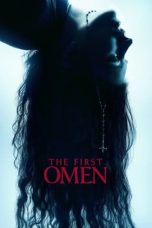- Source: Church of Saint John the Baptist, Busto Arsizio
Perpetrator
John Wick: Chapter 3 – Parabellum (2019)
John Wick: Chapter 2 (2017)
Violent Night (2022)
Tears of No Regret (2020)
The Expendables (2010)
The Hangover (2009)
No More Posts Available.
No more pages to load.
The prepositural collegiate basilica of San Giovanni Battista is a Catholic church in Busto Arsizio, dedicated to one of the patron saints of the city. Like the church of San Michele Arcangelo, this building also stands on the remains of a small Lombard chapel about eight metres wide.
In 1948 the church was elevated to the dignity of minor basilica. The bell tower was constructed from 1400 to 1418, and is the oldest part of the church.
History
It is one of the most important baroque works in the province of Varese. Built to a design by Francesco Maria Richini., the foundation stone of the new basilica was laid on 26 May 1609, but the first service was not held until 1614, when the work was not yet completed, on the occasion of the patron saint's feast day. From the registers of the Fabrica di S. Giovanni and on the basis of the chronicles of the curate Pietro Antonio Crespi Castoldi, we know that from 1609 to 1613 the bones of the old cemetery near the church bell tower were removed and the perimeter foundations were laid, followed by the construction of the chapel dedicated to Sant'Ambrogio. The apses of the old church were demolished in 1610 and the main chapel was built between 1611 and 1612. The transept was completed in 1614 and its chapels were immediately used for the celebration of religious services. The foundations of the new façade were laid in March 1616 and in the same year, the chapel of St. Charles and the chapel of the Relics were built. Work continued at a slow pace for various reasons, including the plague of 1630, and the dome was completed in 1635, 26 years after work began.
The basilica was consecrated in 1640 or 1646 by the bishop of Bobbino, Monsignor Francesco Maria Abbiati.
Architectural Design
= Exterior
=Façade
The imposing façade consists of a lower order of coupled Ionic style pilasters, a prothyrum with an arched pediment, doors made of copper and bronze with bas-reliefs depicting the life of St. John the Baptist (work of Enrico Astorri from 1908), statues of St. Ambrose, St. Charles Borromeo, Faith and Charity and countless other works from various eras. However, the façade was still incomplete: the upper part was completed between 1699 and 1701 by Domenico Valmagini, who inserted a large oval window, a double-curved broken pediment, the statues of St. Peter St. Paul and four prophets (all works by Giovanni Pozzi), and the central statue of St. John the Baptist (by Siro Zanelli), which represents the highest point of the façade.
Bell Tower
Built in the early years of the 15th century, the basilica's bell tower was built for two reasons: one was obviously religious since in 1400 the town of Busto Arsizio was experiencing a period of plague that increased religious commotion to the point of building a concrete work that symbolised the devotion of the people of Busto Arsizio. The second was military: the construction of the bell tower was, in fact, partly financed by the municipality, as it could have been used as a watchtower for defensive purposes since the church was located not far from the centre of the rectangle of fortifications. In 1409, the main bell was cast and placed on the bell tower, while the construction was completed in 1418, the year Pope Martin V came to Milan for the consecration of the high altar of the Duomo.
= Interior
=Inside, the church is covered with barrel vaults and ribbed vaults, the three naves are separated by rows of Ionic style piers and columns. Under the arches hang large canvases depicting the life of St. John the Baptist, painted between the end of the 17th century and the beginning of the 18th century by unknown artists, with the exception of Jesus with the disciples of the Baptist and Herodias and Salome with the head of the Baptist, attributed to Carlo Preda. The left transept hosts, instead, two frescoes of the 17th century (Rest during the Flight into Egypt and Nativity), attributed to Antonio Crespi Castoldi. More recent (between 1904 and 1923) are the decorations with pinkish grit and variegated marble (by Giuseppe Cerami and Pirro Bottaro) and the frescoes of the dome (Glorification of the Baptist), the pendentives (Evangelists) and the vaults (Blessed Juliana and Blessed Bernardino, Immaculate Conception, The Eucharist and The Pope) and the minor transept (Four Prophets) all works by Carlo Grossi, as well as the Way of the Cross in bronze and the portals by Enrico Astorri (1908). On the other hand, carved wooden works such as the pulpit, the choir and the compass date back to the 18th century. Over a period of eight years, between 1757 and 1765, Biagio Bellotti realised the frescoes of the apsidal area of the church. On the vault of the chancel is depicted the Glory of St. Sabinus, in the apse basin Paradise and on the wall of the apse The Baptism of Jesus Christ in the waters of the Jordan.
= "Mortuary"
=Outside the church, on the right-hand side, is the "mortorio", a small temple by an unknown author, painted between 6 September 1689 and 2 November 1692, which was meant to remind passers-by of the mystery of death by displaying skulls, still visible today from Via Milano. Inside, there are paintings of angels and symbolism on the Passion. Paintings were also visible outside, works by the brothers Ambrogio Gelli, Francesco and Biagio Bellotti (the latter grandfather of the Bustocco painter of the same name), depicting the ages of man, the various aspects of death, virtues, purgatory and weeping angels, removed in 1975 and transferred to the Church of San Gregorio Magno in Camposanto.
See also
Churches of Busto Arsizio
References
Sources
Bertolli, Franco; Pacciarotti, Giuseppe (1981), La Basilica di s.Giovanni battista in Busto Arsizio, Busto Arsizio: Libreria della Basilica






























